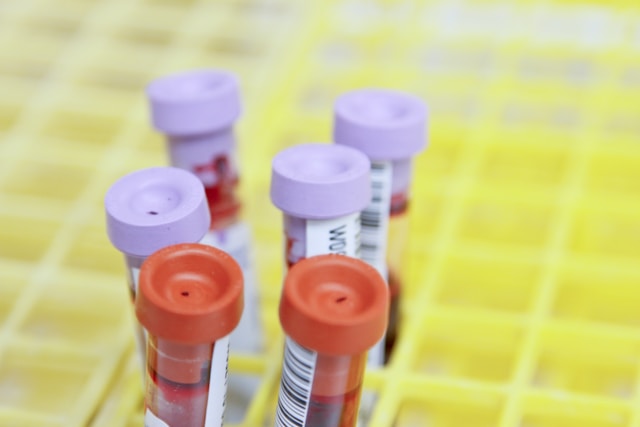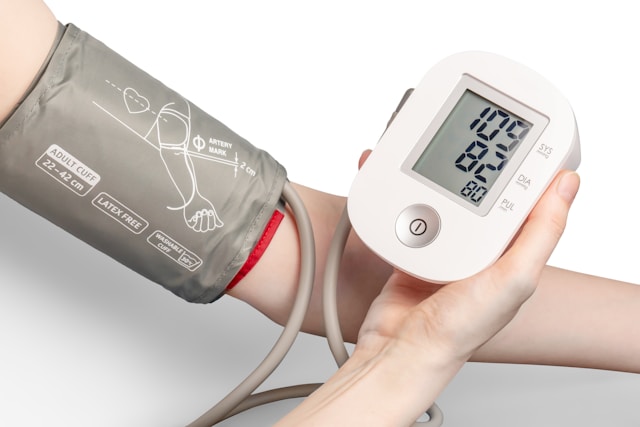My Experience
I have been caring for sickle cell disease patients since my days as a student nurse, and I continue to do so.
My experience caring for sickle cell disease patients has been incredibly emotionally tough.
Witnessing the ruthless agony they endure, the never-ending cycle of crises they face, the considerable amount of time and resources spent on treatment regimens and what their relatives also go through, the look of despair and helplessness on their faces when their kids are suffering a crisis and their constant cry for help.
Let me share a story with you.
As an intern at a teaching hospital last year, I was once posted to the ER (emergency room).
That day, my work assignment with another intern was to perform wound dressings.
So, we moved to one of the cubicles to do a wound dressing for one of the patients.
Before getting there, you could perceive the foul odour from the cubicle.
I braced myself and tried not to show discomfort as I greeted the young woman in her early twenties.
I approached her calmly and gently exposed the affected site located on the upper part of the buttocks. Upon examination, the entire upper gluteal region lacked fatty tissue and had pus oozing; the old dressing was soaked, and she was in excruciating pain despite the heavy doses of strong analgesia.
My partner kept going outside to spit because the stench was unbearable.
I had to stay with her and kept reassuring her. While working, I struck up a conversation with her. I discovered that she was a Pharmacist who started self-medication and got addicted to it, and in the long run, developed an infected injection abscess at the gluteal region.
She’s a sickle cell patient, born to educated parents and the only one with that condition in the family.
She was bittered, tired, hopeless and dealing with the complications of self-injection, which is common among sickle cell patients in this part of the world.
I reassured and encouraged her, and I left her bedside when the dressing was done.
I later found out she had been moved to the ward and saw she was doing better.
You see, the condition is still there, and she has to deal with it for the rest of her life, except a miracle happens.
It is one of the experiences I cannot forget in a hurry.
And as I said earlier, she wouldn’t have had to go through all that if her parents had made the right decision before she was even born.
The Phamacist is just one out of many going through the travail of sickle cell disease, and each would have a terrible tale to tell if asked to share.
This is where knowledge and its proper application come in.
This article is primarily meant to raise awareness about sickle cell disease, help people make the right choices, and provide accurate information to help people living with sickle cell disease.
Overview Of Sickle Cell Disease

What is Sickle cell disease (SCD)?
It is a haemoglobin disorder characterized by a modification in the shape of the red blood cell from a smooth, doughnut shape into a sickle shape.
The malformed cells lack plasticity and can block small blood vessels, reducing blood flow.
This condition leads to shortened red blood cell survival and subsequent anaemia, often called sickle-cell anaemia.
Poor blood oxygen levels and blood vessel blockages in people with sickle-cell disease can lead to chronic acute pain syndromes, severe bacterial infections, and necrosis (tissue death).
What Causes Sickle Cell Disease?
Sickle cell disease is inherited from parents in the same way as blood type, hair colour, texture, eye colour, and other physical traits.
For example, when both parents have the Sickle Cell Trait, they have a 25% chance (1 of 4) of having a baby with sickle cell disease with each pregnancy.
SIGNS AND SYMPTOMS
- Anemia
- Pain Crisis
- Jaundice
- Fatigue
- Swelling in hands and feet
- Delayed growth
Types Of Sickle Cell Disease
The most common types are:
- Hemoglobin SS Disease, Hemoglobin SC Disease
- Sickle Beta-Plus Thalassemia
- Sickle Beta-Zero Thalassemia
Management Of Sickle Cell Disease
Breakthrough Treatment
Last year, the FDA approved the first cell-based gene therapies for treating sickle cell disease in patients 12 years and older who experience recurrent vaso-occlusive crises.
One of the treatments uses CRISPR/Cas9 gene editing therapies to edit the patients’ hematopoietic stem cells (genome editing).
Casgevy and Lyfgenia are the first gene therapies ever approved to help treat sickle cell disease.
These therapies simply modify the DNA of stem cells and correct the anomaly that causes them to produce sickle cells. The modified cells are then placed back into the patient, where they become part of the bone marrow and increase the production of fetal haemoglobin (Hbf), a type of red blood cell that helps transport oxygen.
These therapies are very new and will still require a lot of time to understand them. However, there have been successful use cases in which patients undergoing the therapies have reported not having any vaso-occlusive crisis in 24 months.
Generally, the treatments and management aim to manage symptoms and prevent a crisis (VOC OR VOE).
- High fluid intake
- Healthy diet
- Folic acid supplementation
- Pain medication
- Vaccination and antibiotics for the prevention and treatment of infections
- Blood transfusions
Prevention
Reliable and inexpensive blood tests can identify couples at risk of having affected children.
This screening is to be done before marriage or pregnancy.
In regions like Africa, where sickle cell disease (SCD) is prevalent, it is crucial to implement marital screenings and counselling. There may be incompatible couples who may decide to go ahead with the marriage despite being aware of the risks involved. In this case, they should be educated on how to care for kids with SCD in case they have one.
Facts About Sickle Cell Disease
- SCD predominates in Africa.
- SCD occurs when a child receives two sickle cell genes (one each) from both parents.
- One in every four Nigerians has the sickle cell trait.
- SCD can be cured for certain patients through bone marrow transplants.
- A person with SCD can live a long, healthy life with proper care.
- There is currently no universal cure for sickle cell disease.
- World Sickle Cell Day is usually celebrated on June 19 every year.
Do you know that many celebrities, including musicians, athletes, business people, etc., live with SCD worldwide?
They have been able to manage the symptoms and lead extraordinary lives. Many of them have shared their testimonies and given hope to people living with SCD.
This shows that people with SCD can also lead great lives with the right support.
What Is Your Genotype?
This subject is quite personal because I carry the sickle cell trait.
So, I get sensitive when it comes to relationships, and It is one of the first questions I ask a potential spouse because I know the risk involved.
Not only does the sickle cell patient suffer, but the entire family does!
So, check your genotype before marriage, more than once, at different places.
There have been reports of people who thought they had an AA genotype but had an AS genotype and got married to a person with an AS genotype.
It was already late when the discovery was made. Be wise! You can save yourself (and your family) from a lifetime of pain.
In Conclusion
June 19 is celebrated globally as World Sickle Cell Day to raise awareness and advocate for sickle cell disease.
The day highlights the challenges people with sickle cell face and how they can manage the condition.
This year’s theme is “Hope Through Progress: Advancing Global Sickle Cell Care & Treatment.”
References
Sickle Cell Disease | WHO | Regional Office for Africa. (2023, July 17). WHO | Regional Office for Africa. https://www.afro.who.int/health-topics/sickle-cell-disease
5 facts you should know about sickle cell disease | CDC. (2020, May 13). Centers for Disease Control and Prevention. https://www.cdc.gov/ncbddd/sicklecell/materials/infographic-5-facts.html
Sickle cell anemia – Symptoms & causes – Mayo Clinic. (2022, March 9). Mayo Clinic. https://www.mayoclinic.org/diseases-conditions/sickle-cell-anemia/symptoms-causes/syc-20355876#symptoms
Koko. (2022, September 3). 10 Nigerian celebrities who are sickle cell. KOKO TV Nigeria | Nigeria News & Breaking Naija News. https://koko.ng/nigerian-celebrities-who-are-sickle-cell/
What is Sickle Cell Disease (SCD)? – Sickle Cell Disease Association of America Inc. (2022, January 14). Sickle Cell Disease Association of America Inc. https://www.sicklecelldisease.org/sickle-cell-health-and-disease/types/
World Sickle Cell Day – Sickle Cell Disease Association of America Inc. (2024, June 13). Sickle Cell Disease Association of America Inc. https://www.sicklecelldisease.org/get-involved/events/awareness-month-and-world-sickle-day/





Drop Your Comment